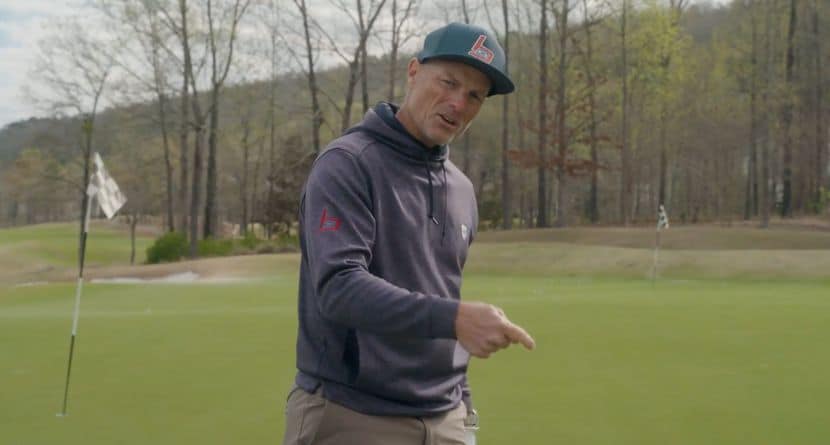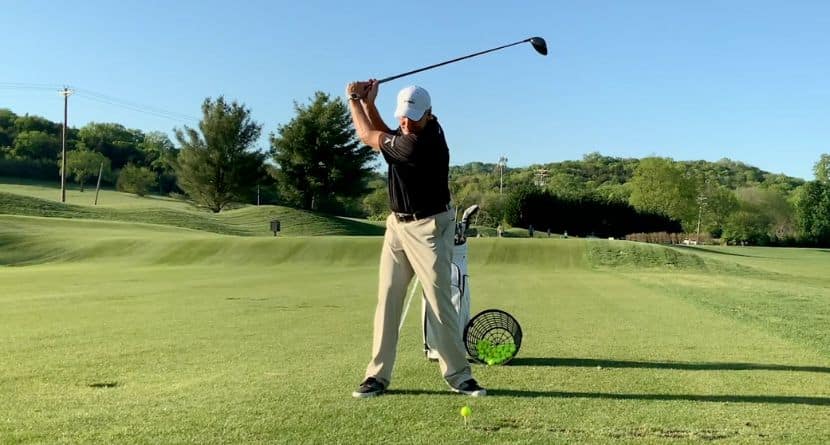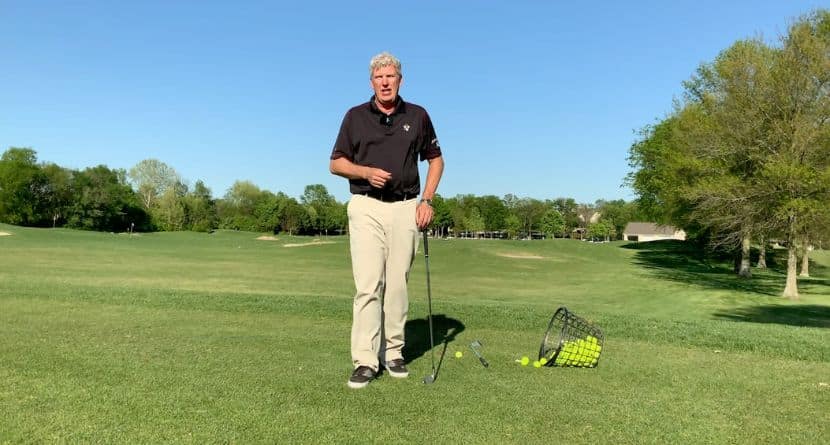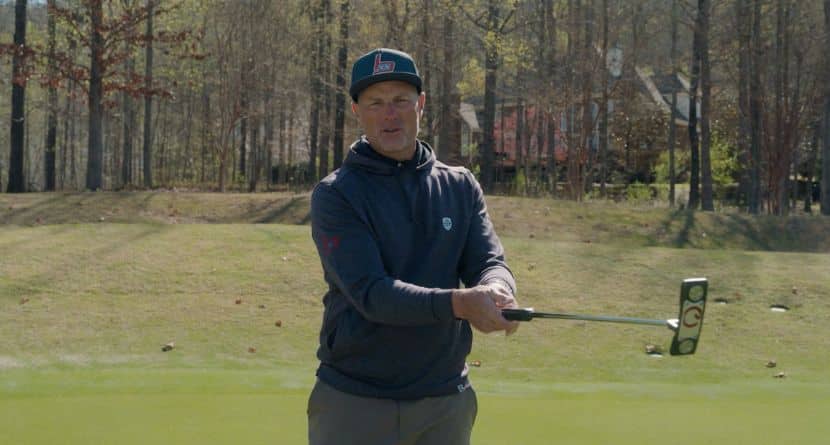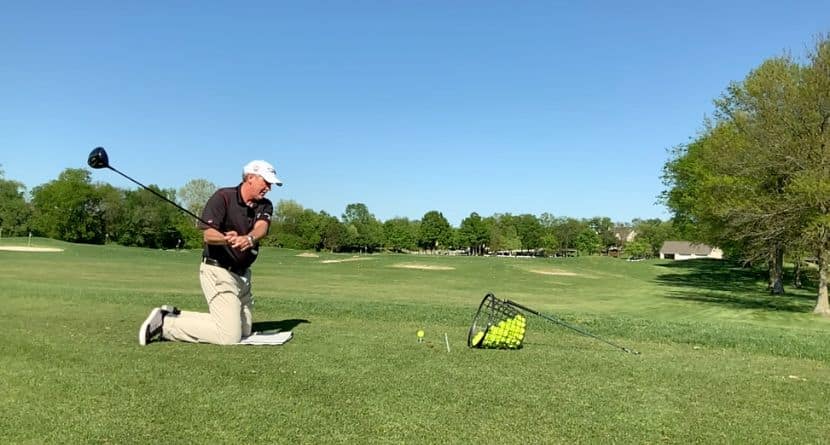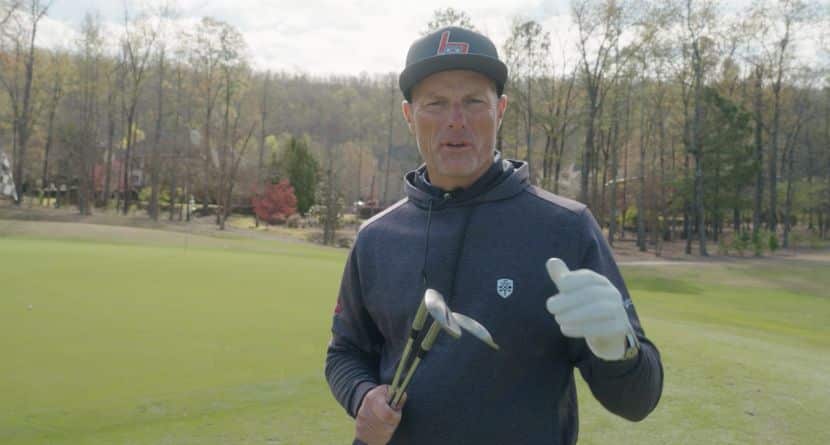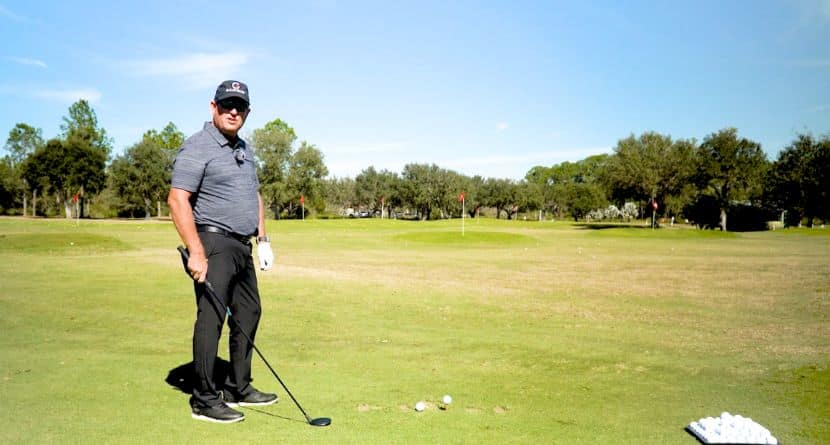This week at Bellerive Country Club, host of the 100th PGA Championship, we have seen added pressure on players’ tee shots due to the soft fairways and lack of additional roll. The result has been wayward misses like Jordan Spieth had on the 15th hole on Saturday.
As the pros look to add extra speed at impact, their accuracy is diminished — that’s no secret to any weekend warrior who has reached back and tried to add a little more — but what makes the top players great is their ability to recover.
Jordan hooked his tee ball well left of the fairway and found a fortunate lie where the gallery had been. The ball was sitting nicely, however, what he needed the ball to do was a different story.
He faced about a 220 yard shot with a small rise to clear, but needed the trajectory to stay down for about 20-30 yards. Managing a shot that carries that distance on a lower flight is difficult and requires manipulating some aspects of the setup and swing.
Let’s take a look at how Jordan pulled it off and had a good look at birdie after a subpar drive.
The Lie:
-Jordan had a clean look at the back of the ball and an unrestricted swing. However, primary rough has a tendency to produce high ballooning shots that can often carry longer than normal- the flier lie. Being an experienced player, Spieth knew he had to control the flight and dictate the trajectory with his swing and club.
The Shot
- Given the yardage of the shot, the club selection was going to aid in keeping the ball lower, but make a lower-lofted club narrows the room for error when it comes to landing on and holding the green. To ensure the proper flight, Jordan put the ball back of center slightly and had a normal width stance. Narrowing your stance will cause a steeper angle of attack into the ball and result in a higher trajectory, but he was able to mitigate this pitfall.
- Keeping the ball low starts with the proper backswing. Notice how Jordan kept the backswing short of parallel even though the shot needed to travel more than 200 yards. Doing this gave him more control of the clubface and shaft position at impact.
- Not only was the backswing kept short, we can see the plane is a little flatter. The flat swing plane allows for the hands and forearms to roll on the way back, and more importantly, it allowed Jordan to turn his arms over and down through the ball. Releasing the hands in this manner is very powerful and sends the ball on a very low line.
- Finally, chase the ball. Your finish should be low with the back of your lead hand pointing towards the ground and arms fully extended outwards towards the target and following the ball. Swinging for this position will ensure the spin on the ball was limited, knocking the usual flight down and avoiding any tree limbs.
The result was a laser from the rough that was received well by the soft greens. Jordan was not able to make the birdie putt, but his ability to control his trajectory afforded him the chance at a birdie instead of a layup and scramble for par.
Try these techniques next time you have a chance to get close to or on the green and have to keep it low.


